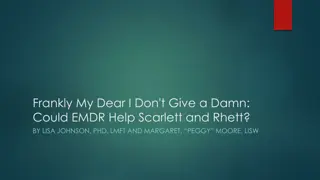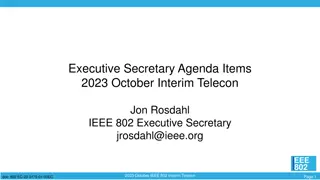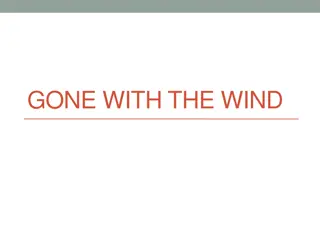
Exploring Funding and Engagement Models by Scarlett Varga
Dive into the world of fundraising mentality, funding sources, successful proposals, and the balance between funding and independence in the think tank sector with insights from Scarlett Varga, Head of development at Bruegel and Co-founder of The Brussels Binder.
Download Presentation

Please find below an Image/Link to download the presentation.
The content on the website is provided AS IS for your information and personal use only. It may not be sold, licensed, or shared on other websites without obtaining consent from the author. If you encounter any issues during the download, it is possible that the publisher has removed the file from their server.
You are allowed to download the files provided on this website for personal or commercial use, subject to the condition that they are used lawfully. All files are the property of their respective owners.
The content on the website is provided AS IS for your information and personal use only. It may not be sold, licensed, or shared on other websites without obtaining consent from the author.
E N D
Presentation Transcript
Exploring Funding and Engagement Models Scarlett Varga Head of development, Bruegel & Co-founder, The Brussels Binder scarlett.varga@bruegel.org
1. Fundraising mentality 2. Funding models/ sources 3. Fundraising cycle 4. What is a succsessful proposal?
Fundraising mentality for non-profits What is your overhead rate? It is too low. We systematically under-invest in human resources, financial management, and program management to keep it that way. By doing so, we have a nice, low overhead number to put on grant applications like this one. Please send money. (Nonprofit AF- full list) - the imbalance of power between funders and nonprofits leads to the lack of honest communication and feedback if the nonprofit sector is to realize its potential, think tanks need to stop apologizing for the value of the work they are trained to do. Do not overpromise, but avoid under-selling think tanks should not be afraid of advertising how and why flexible funding is vital to executing their strategy strategy first: strategy is a fundraising necessity, not a luxury (Jeremy Avins) - - -
Funding (1) vs independence can any think tank still accept funding from any source without immediately coming under suspicion of having been bought by some public or private vested interest? (Transparify) Independence and the research agenda Independence and transparency - execution of Research Programme is independent - scholars encouraged to exchange with funders while conducting research but NO consensus sought on research conclusions - outputs signed by scholar(s), published under editorial responsibility of the Director- no institutional standpoint - Finances: every euro cent of income is shown in the annual report (+ levels?) - Staff: Fellows required to adhere to a Statement of Research Integrity - Scholars declare outside interests annually (academic, media, political, national, commerical, financial etc.) and publicly - Research: Review Task Force, Scientific Council assessing quality of research output - No consultancy or lobbying activities undertaken
Funding models/ sources (2) Funding Model methodical and institutionalized approach to building a reliable revenue base to support an organization s core programs and services (Stanford Social Innovation Review) Funding Sources Funding Model 10 Key Models, e.g -> Member motivator/Big Bettor/ Policy Innovator (Stanford) Foundations Donors Clients Sponsors Private sector Crowdfunding Public sector + Sustainable ? Government based/ Foundation based/Corporate based/ Diversified
Funding models/ sources (3) Case study of Bruegel Goal of broad public/private balance (Minimum 33% private finance) State members: 5 categories, from ca. 33,203 to 199,203 Corporate members: 50,000 per year, regardless of size Institutional members: 50,000 per year ( 25,000 for Central Banks of Members) Additional resources from participation in multi-partner research projects, research grants, etc. no party currently contributes more than 3-5% of the total budget
Fundraising cycle Prospect/Monitor for opportunities (incl. collaboration with research community to share personal networks, ex-ante preparation for events, etc.) Evaluate and decide not every opportunity is for you Relationship building (turning a logical discussion into an emotional one) Develop a proposal/ Value proposition (1/ budgeting expertise is not trivial; 2/ have full buy-in from people involved/ named in the proposal 3/ develop a sound concept paper and edit/ expand it later) Follow-up and reporting (do not get comfortable)
What is a succsessful proposal? 1. General objective (IMPACT): your project will contribute to what? (e.g. deepest understanding of a specific issue) 2. Specific objective (BENEFIT): what are the direct benefits created by your project? 3. Results (OUTPUT): what are the expected results? 4. Activities (TASKS): once you defined objectives and results, you can then develop the list of activities Know your donors: timeline of calls, application process and requirements Know yourself: internal strategy, goals and objectives (both short- and long-term), vision Match interests
SCHOOL for THINKTANKERS www.ott.school






